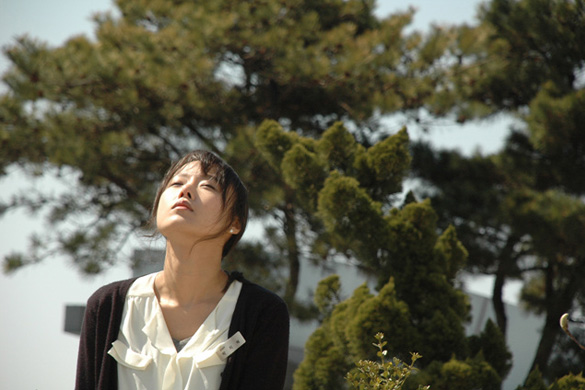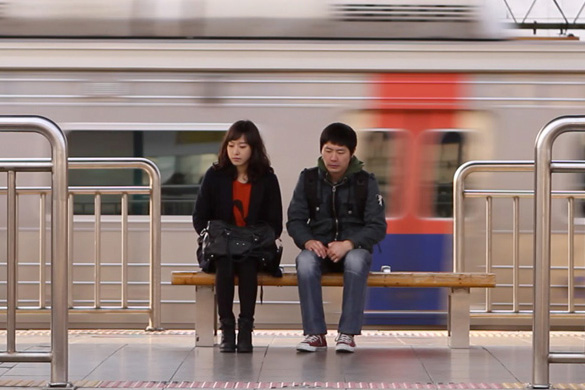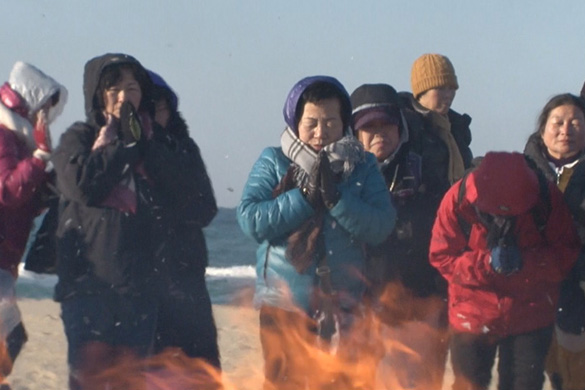
 |
||||
In 2009, a group of Korean pro-life obstetricians informed Korean authorities about fellow doctors and hospitals performing illegal surgical abortions; causing a political and social uproar and sparking a media frenzy.
Review: From the very outset, 'Let's Dance' deftly contrasts the attitudes of those in Korea who believe in the right of unborn foetuses to life - be they ordinary members of the public or indeed authorities - with the real life experiences of women having undergone abortions. Beginning with noticeably and almost endlessly bright scenes from the Korean 2012 Pro-life Rally - sun-drenched footage of singing and dancing adults; imagery of hoards of happy, smiling children playing; and vocal affirmations, both in speeches and proudly upheld banners, of the sanctity of life for those not yet born who are unable to speak for themselves - the narrative soon darkens to focus on several middle-aged women discussing their own (often numerous) abortions and those of their friends, in years gone by; complete with no-holds-barred accounts of the surgical procedures involved and frank detailings of events - including the failure of governmental contraception initiatives and a social system/society that historically provided little in the way of help, support or even sympathy for women becoming pregnant outside of wedlock - that both led to them thinking that giving birth would essentially destroy their futures and leaving them feeling they had no option but to abort.
Before we are introduced to these younger women from all walks of life - a lawyer; a teacher; a student; a film-maker; and a housewife, among others - we are shown a young actress walking in slow motion through a crowded thoroughfare while an unnamed, real life female is heard explaining the reasons she for a long time felt that she could never outwardly confess to having had an abortion, and gradually - one by one - the documentary's interviewees appear full screen to begin telling their painful experiences; each at first shown completely blurred visually but slowly coming into focus in a manner akin to the way in which they each bravely discarded the veil of anonymity to speak publicly of their trials and tribulations. Alongside these women's in depth discussions of the events leading to their unwanted pregnancies; the situations both social and personal that pushed (or forced) them into choosing to abort; and their efforts to keep even their closest friends from finding out, 'Let's Dance' also features 'created' content acted by the aforementioned actress and detailing her fictional relationship leading to a similar outcome as those of the interviewees. However, while it's quickly made clear that this girl is simply acting the dialogue in her first monologue, for example, is nonetheless the real story of an unnamed woman's experience immediately after undergoing an abortion (Following the surgical procedure, the woman in question went to a diner situated in the basement of the clinic to gather her thoughts. Ordering beef broth, she sat down to eat but couldn't help but burst into tears as a result of what she had just been through, at which point the diner owner sadly informed her that all of his female customers cried the entire time they were in his establishment) and is as such every bit as poignant as the majority of the other first-person stories detailed.Of course, each of the women's stories - juxtaposed with historical information, trial/news footage and acted scenes - becomes part and parcel of the documentary's overall statement on the ongoing debate relating to the legality of abortion in South Korea; how little attitudes (both social and judicial) have changed in the country over the years, certainly up to the point of the documentary's creation; and the question of whether a foetus' right to life should continue to takes precedence over a woman's right to self-determination, but individual though each woman's experience obviously is it nonetheless has an undeniable commonality with all of the others - showing women consistently left to take sole blame and responsibility for their pregnancies; forced to face the social stigma associated with abortion, totally alone; and who were so traumatised long-term by what their perceived lack of choice forced them into that they agreed to take part in 'Let's Dance' in a desperate attempt to gain closure; to have an opportunity to finally talk about these cataclysmic life events (and even more so to be listened to); and to hopefully put the past to rest once and for all and move on with their lives as a result. The question is whether the closure they so desperately seek will be forthcoming and ultimately allow them to dance their way past their pain.
Throughout 'Let's Dance' in its fictional 'acted' scenes, references are made to a snail - it is spoken of in dialogue; it is shown dancing with the actress towards the film's culmination; and is even given birth to in one particularly surreal segment - but whether you think of that snail in terms of it being an hermaphrodite (at the same time male and female) or in its ability to conceive asexually it's appearance has the same implication - that it can deal with the continuing of its species without the need for a mate to share responsibility much as these women have been expected to by all and sundry. In short, as far as Korean law and social norms are concerned it only takes one to tango. As a final point, while the overall aim of 'Let's Dance' is both worthy and indeed vital, it is the heartbreaking stories of the women themselves that will stay with you long after the credits roll, and for me one in particular has refused to leave me since watching the film for the first time:
'Let's Dance' (자, 이제 댄스타임) / 2013 / Directed by Jo Se-young
|
||||
All images © DMZ Docs, CJ Entertainment, Korean Film Council (KOFIC) Review © Paul Quinn |
||||



